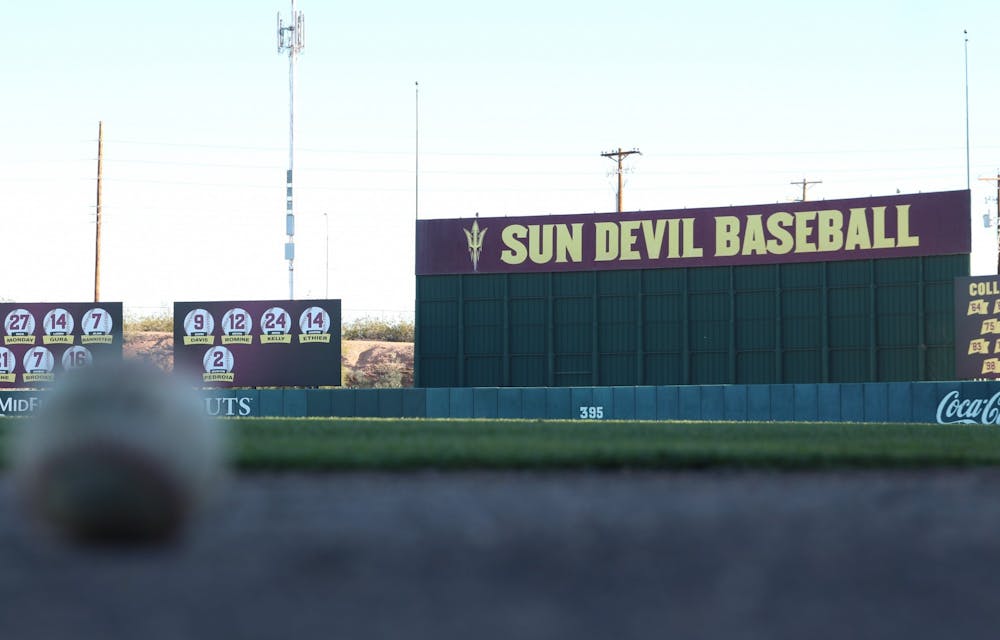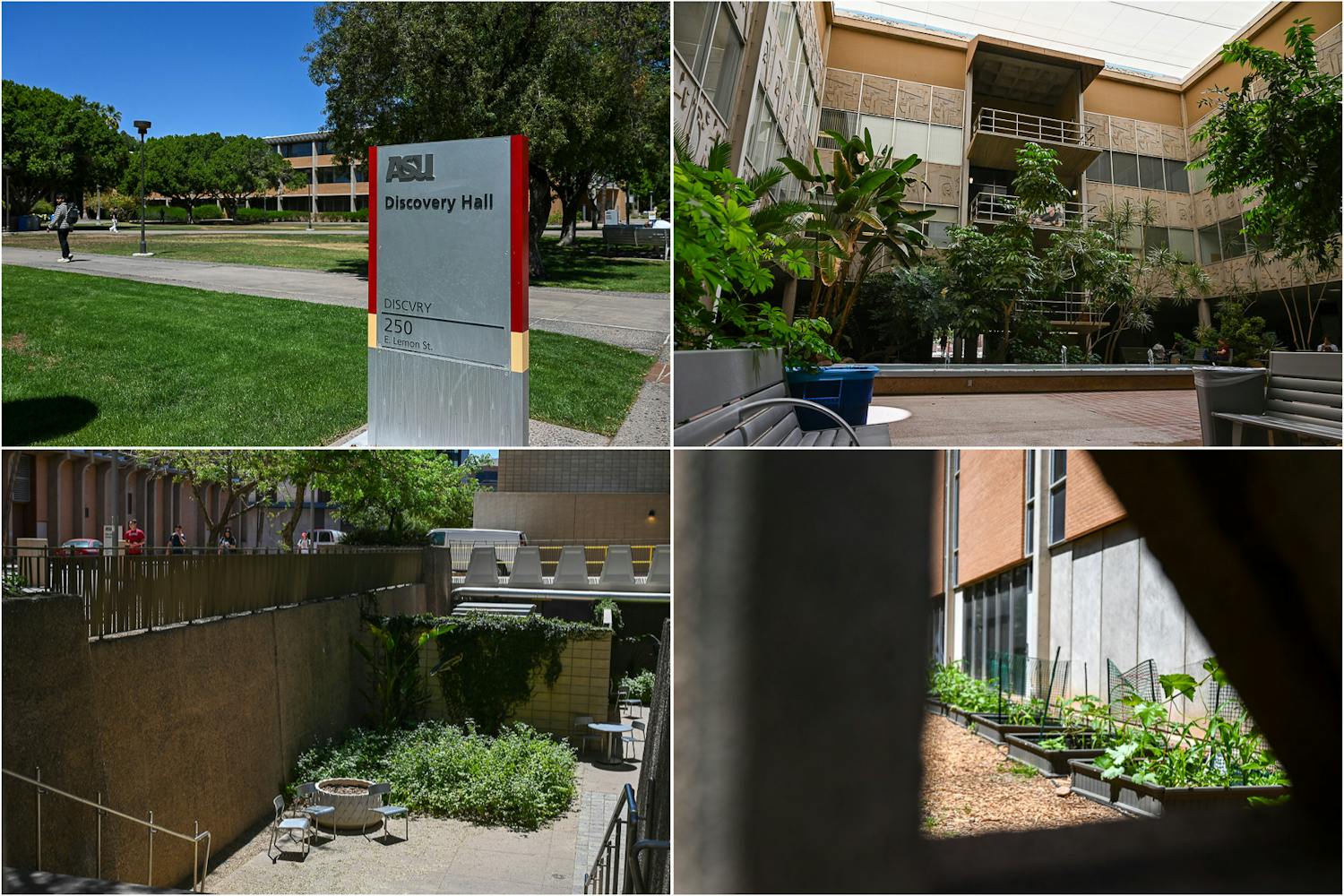It's been nearly a decade since ASU baseball moved from Packard Stadium to Phoenix Municipal Stadium, but the team's old stomping grounds live on in the memories of Sun Devils past and present.
"The cool part about Packard was the history and the mystique about it," ASU head coach Willie Bloomquist said. "The locker rooms were an absolute dump, but it was our dump, and we embraced it and loved it."
Packard Stadium opened in 1974 after ASU baseball had been around for 15 years and won three NCAA championships. The stadium was built on the corners of what is now Rural Road and Rio Salado Parkway next to the dried-up Salt River. Long before Tempe went vertical, fans had uninterrupted views of palm trees, Camelback Mountain and Arizona sunsets.
On the field, the Sun Devils fit right into their new home as they went 1,035-272-1 over a 40-year stint at Packard Stadium. ASU would go on to win two NCAA championships, finish runner-up in three others, and appear in 30 NCAA Baseball Tournaments while playing at the stadium.
It's impossible to tell the full story of Packard Stadium without mentioning former head coach Jim Brock. The College Baseball Hall of Fame coach led ASU for 23 seasons, won two College World Series and finished his career with a 1,100-440 record. Pat Brock, his widow, said that Jim loved ASU and even donated funds to complete the stadium.
"The stadium was unfinished; there were no dressing rooms, and so that made it difficult," Pat Brock said. "The players had to go up and dress in the basketball arena and then come down to the games and go back up there. So that was bad. Jim raised some money so that they could add those types of facilities to the stadium."
Pat Brock vividly remembers her days at Packard, saying that the stadium was far from nice. The park didn't have handrails on staircases, and fans sat on hard bleachers. Still, she went to most games and sat in the front row next to ASU’s dugout. A true baseball fan, Pat Brock kept a scorebook at games and even helped her husband tally pitch counts.
Tragically, Jim Brock's time coaching ASU was cut short when he died of colon cancer at age 57, just days after the conclusion of the 1994 season. The Sun Devils earned his 1,100th win as head coach as he sat in a Mesa hospital.
Decades later, Pat Brock still enjoys hearing from people associated with ASU baseball. She lives in Tempe and has season tickets in the shade on the first baseline at Phoenix Municipal Stadium. She's seen a lot of great games at ASU's new stadium, but she says she misses the history and aura of Packard.
"It was a golden time for ASU baseball," Pat Brock said. "We had girls who would go around and get the bats, and I hear from so many of them. They're still Sun Devils."
Like Brock, few people saw Packard Stadium the way Randy Policar did. Policar went to ASU before becoming an assistant sports information director in 2005 and earning the lead public address announcer role from 2007 to 2011. He said the stadium didn't change from 1977 to 2007 and that Packard's old-school nature can't be topped.
"I have plenty of complaints about Packard's press box," Policar said. "The Wi-Fi wasn't reliable, there were no doors, and there was no security up in the press box. But man, I wish I could go back and watch some games in that ballpark again. There was just some(thing) special. It was like the old Boston Garden for the Celtics."
The old park meant as much, if not more, to players as it did to fans. Bloomquist played under Pat Murphy from 1997 to 1999 before the stadium underwent major renovations in the 2000s. The ASU skipper remembers seeing mice and stray cats in the dusty locker room and up to three players sharing one locker.
While he can picture the dirty confines of Packard, Bloomquist vividly remembers what it felt like to play at the stadium. He remembers the feeling of beating UA at Packard and winning a controversial game against USC.
"There was kinda always weird things happening within Packard," Bloomquist said. "It was a smaller stadium, smaller attendance, but you know, it was right on top of you."
ASU baseball was rough around the edges when Bloomquist was playing. The team only had two uniform combinations and no frills for players, but that's what he loved about playing at home. The team wasn't worried about looking the best or having the best equipment; they just wanted to win games.
That rough-around-the-edges appearance lost some of its staying power in Packard's later years. Players said it always felt like fans were right on top of them, but the park's complexion changed with the introduction of a grass hill for seating.
Before then, Bloomquist said the crowd was usually older and mainly consisted of alumni and locals. Then, students like Policar started showing up and making memories.
"I think once that hill started getting there and more students started showing up, it started getting a little more hostile, I think, for the opposing teams," Bloomquist said.
Packard Stadium was a park for the people. 338 feet down the lines and 395 feet to center field, Packard Stadium was a paradise for hitters and fans of towering home runs.
"I feel like we were never out of a game because, like, you could be down 10-0, and it's like three or four good swings and a couple of good bats in between," former ASU hitter Brett Wallace said. "It was a home-field advantage."
In two seasons as a Sun Devil, Wallace hit 23 home runs as a lefty and often launched balls out of the park. Policar watched Wallace play at ASU and said that he was "put on this Earth to hit at Packard Stadium." He also said that Wallace's swing was perfect and that he always knew he'd get at least a double in most games.
Packard's later years saw excellence on the diamond. ASU qualified for 12 straight NCAA Baseball Tournaments and two College World Series in the team’s final years at the stadium. Notable Sun Devils like Merrill Kelly, Jason Kipnis, Kole Calhoun and Austin Barnes were among some of the last ASU baseball legends to play at Packard Stadium.
Those later years even made an impression on a young fan who would grow up to be a staple in the Sun Devils lineup. Junior catcher Ryan Campos is a Mesa native and grew up going to ASU games with season tickets on the lawn.
"We would just pull up like a blanket and just be there, being the fans," Campos said. "I mean, I love Packard. Some of my best memories growing up are there."
All grown up, Campos now calls the shots from behind the dish at Phoenix Municipal Stadium.
ASU's new home has its perks. The park has views of Papago Park's buttes, spring training caliber facilities and other modern amenities a premier college baseball team needs to stay relevant.
Meanwhile, Packard Stadium is but a shell of its former self. The grass is dead, and the infield is now home to shipping containers and construction equipment. The concrete skeleton of Packard remains, but most of ASU's history has been washed away with time, and the grounds will one day be turned into an office building.
Some fans and former players are conflicted with the idea of tearing down a piece of ASU history and want the University to preserve Packard Stadium's legacy in some way.
It's been years since a Sun Devil has rounded the bases at Packard Stadium, years since fans have cheered on their alma mater surrounded by history. The team's old home now lives on in the players who took the field and diehard fans who crowded the bleachers.
For one, Pat Brock will never forget her days watching baseball there.
"I miss Packard," Pat Brock said. "I saw a lot of great games there. But we have much better facilities now."
Edited by Alfred Smith III, Sadie Buggle and Grace Copperthite.
Reach the reporter at jcbarron@asu.edu and follow @jackcbarron on X.
Like The State Press on Facebook and follow @statepress on X.
Jack is a senior studying sports journalism. This is his fourth semester with The State Press. He has also worked at Radio Sucesos and XPR Sport Experience in Argentina.




